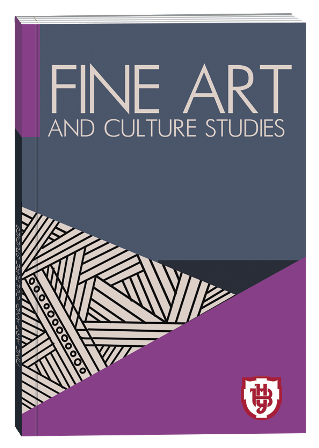DEEP LEARNING AS A TOOL FOR ALGORITHMIC ANALYSIS IN CONTEMPORARY COMPUTER MUSICOLOGY
DOI:
https://doi.org/10.32782/facs-2025-4-6Keywords:
computational musicology, deep learning, artificial intelligence, aesthetic markers, music analysis, music education, MIR, interpretation, sound engineeringAbstract
This article examines the role of deep learning (DL) systems in shaping a new methodology for computer musicology. The object of the study is the musicological practices of music analysis and interpretation, as well as computer musicology. The subject is new artificial intelligence (AI) technologies that can be applied within musicological analysis and interpretation as a tool for objectifying aesthetic perception, algorithmically analysing acoustic parameters, and for use in music education. Aims. The primary aim is to substantiate the hypothesis that AI technologies can serve as a tool for objectifying aesthetic perception and for the algorithmic analysis of acoustic parameters of musical sound. A particular focus is placed on integrating deep learning technologies into the professional work of musicians, sound engineers, and researchers. Methodology. The paper employs systematisation, along with integrative, inductive, deductive, and comparative analysis of concepts. The theoretical framework is based on academic sources on AI technologies within the fields of musicology and computer musicology. The analysis is conducted in the context of Music Information Retrieval (MIR) and Music Generation (MG), using a SWOT analysis on the AI system, Suno AI. Scientific Novelty. The novelty lies in the further development of the author’s concept of creative-technological analysis. Within this framework, musicological and creative-technological analysis are integrated with generative and educational practices. The potential of the hypothesis that deep learning technologies can act as a tool for objectifying the cognitive processes of auditory perception is substantiated. Conclusions. In the context of modern digital technology development, computer musicology is moving beyond its traditional paradigm. This is because deep learning enables tasks such as genre classification, the identification of means of musical expression, emotion recognition, and music generation, all by using objective acoustic parameters. Based on this, a hypothesis is put forward that AI’s deep learning technologies can serve as a tool for objectifying cognitive processes of auditory perception. This allows for the expansion of musicology’s toolkit and contributes to the universalisation of musical cognition. However, this transformative and optimising process necessitates considering the risks associated with the standardisation of the musical product’s quality and potential plagiarism.
References
Hoedt, K., Flexer, A., & Widmer, G. Are Inherently Interpretable Models More Robust? A Study In Music Emotion Recognition : Proceedings of the 22nd Sound and Music Computing Conference (SMC-25). 2025. pp. 1–8.
Humphrey, E. J., Salamon, J., Nieto, O., Forsyth, J., Bittner, R. M., & Bello, J. P. JAMS: A JSON Annotated Music Specification for Reproducible MIR Research. In: Proceedings of the 15th International Society for Music Information Retrieval Conference (ISMIR 2014). Taipei, Taiwan, 2014. pp. 591-596.
Lerch, A., Grachten, M., & Cancino-Chacón, C. Machine Learning and Music Performance Analysis. Journal of New Music Research. 2020. Vol. 49, No. 1. pp. 36-63.
Mon, Y.-J. LSTM-Based Music Generation Technologies. Multidisciplinary Digital Publishing Institute. 2025. Vol. 14, No. 6. p. 229.
Moysis, L., Iliadis, L. A., Sotiroudis, S. P., Boursianis, A. D., Papadopoulou, M. S., Kokkinidis, K.-I. D., Volos, C., Sarigiannidis, P., Nikolaidis, S., & Goudos, S. K. Music Deep Learning: Deep Learning Methods for Music Signal Processing – A Review of the State-of-the-Art. IEEE Access. 2023. Vol. 11. pp. 17031-17052. https://doi.org/10.1109/ACCESS.2023.3244620
Nugroho, Y. Y. T., & Manggala, P. P. M. D. The Use of AI in Creating Music Compositions: A Case Study on Suno Application. У: Atlantis Press. 2024. С. 177-189.
Puyt, R. W., Lie, F. B., & Madsen, D. Ø. From SOFT approach to SWOT analysis, a historical reconstruction. Journal of Management History. 2024. Vol. 31, No. 2. pp. 333–373. DOI: https://doi.org/10.1108/JMH-05-2023-0047.
Xie, L., Wang, Y., & Gao, Y. Acoustical Feature Analysis and Optimization for Aesthetic Recognition of Chinese Traditional Music. EURASIP Journal on Audio, Speech, and Music Processing. 2024. Vol. 2024, No. 7. https://doi.org/10.1186/s13636-023-00326-2
Li, P., & Wang, B. Artificial Intelligence in Music Education. Taylor & Francis. 2024. Vol. 40, No. 16. pp. 4183-4192.
Zhang, L. The Complementary Role of Artificial Intelligence to Traditional Teaching Methods in Music Education and Its Educational Effectiveness. 2025. Vol. 10, No. 1. pp. 1-17.
Xin, W. Research on the Function of Artificial Intelligence Music Technology in College Students’ Aesthetic Education. IGI Global Scientific Publishing. 2025. Vol. 27, No. 1. pp. 1-15.
Wu, Q. The application of artificial intelligence in music education management: Opportunities and challenges. SAGE Publications. 2025. Vol. 25, No. 3. pp. 2836-2848.








